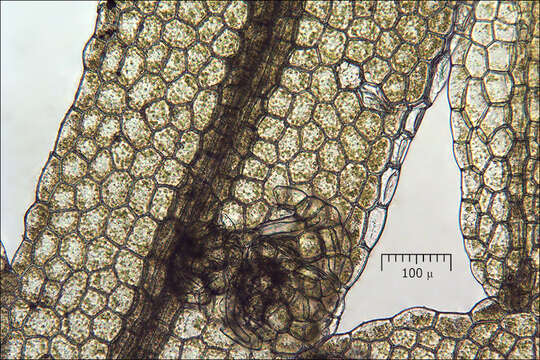Metzgeria-furcata_thallus_2M

Description:
Metzgeria furcata (L.) Dumort., syn.: Metzgeria furcata (L.) Corda, Metzgeria densiretis Steph. ex Paris, Metzgeria innovans Steph., Jungermannia furcata L., Metzgeria furcata var. ulvula.Family: MetzgeriaceaeEN: Forked Veilwort, DE: Gewhnliches IgelhaubenmoosSlo.: no name foundDat.: Feb. 07. 2022Lat.: 46.35898 Long.: 13.70165Code: Bot_1441/2022_DSC6123Habitat: Moderately inclined mountain slope, south-southeast aspect; Fagus sylvatica forest with some Picea abies intermixed; calcareous, colluvial ground; fairly warm and dry place; average precipitations ~ 3.000 mm/year, average temperature 7-9 deg C, elevations 580 m (1.900 feet), alpine phytogeographical region. Substratum: bark of Fagus sylvatica intermixed with other mosses; only on northeast side of the trunk.Place: Lower Trenta valley, between villages Soa and Trenta, right bank of river Soa, right bank of Skokar's ravine above main road Bovec - Vri; East Julian Alps, Posoje, Slovenia EC.Comments (pertain to pictures in Flicker album Metzgeria-furcata_I): Metzgeria furcatais a very common liverwort in Trenta valley. It can be recognized by +/- flat (when moist!), thin, only one cell thick, and somewhat translucent, about 1 mm wide thallus lobes. Their margins are not curved down and mostly hairless. However, lobes with considerable number of hairs are also quite frequent. So, one has to inspect several of them to get an overall impression. In any case, there are far less hairs present than with a very similar 'sister' species Metzgeria conjugata. Metzgeria furcata thrives mostly on tree bark, but it can be found also on ground or on rocks.Ref.: (1) Paton, J.A., The Liverwort Flora of the British Isles, Brill, Leiden, Boston (2011), p 552.(2) Glime, J. M. 2021. Aquatic and Wet Marchantiophyta: Metzgeriaceae and alyculariaceae. Chapt. 1-12. In: Glime, J. M. 1-12-1, Bryophyte Ecology. Volume 4.; available at digitalcommons.mtu.edu/bryophyte-ecology/. (accessed March 15. 2022)(3) Ian Atherton, Ed., Mosses and Liverworts of Britain and Ireland - a field guide, British Bryological Society (2010), p246.(4) Smith A.J.E., The Liverworts of Britain & Ireland, Cambridge University Press (1991), p 304.(5) V. Wirth, R. Duell, Farbatlas Flechten und Moose, Ulmer, (2000), p 191.
Included On The Following Pages:
- Life (creatures)
- Cellular (cellular organisms)
- Eukaryota (eukaryotes)
- Archaeplastida (plants)
- Chloroplastida (green plants)
- Streptophyta
- Embryophytes
- Marchantiophyta (liverworts)
- Jungermanniopsida
- Metzgeriidae
- Metzgeriales
- Metzgeriaceae
- Metzgeria
- Metzgeria furcata
This image is not featured in any collections.
Source Information
- license
- cc-by-nc-sa
- copyright
- Amadej Trnkoczy
- photographer
- Amadej Trnkoczy
- original
- original media file
- visit source
- partner site
- Flickr Group
- ID


